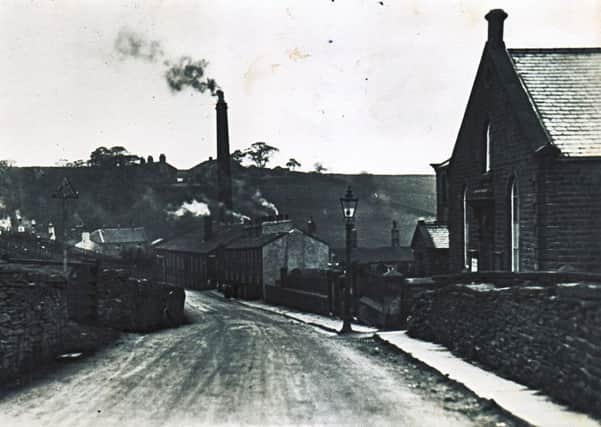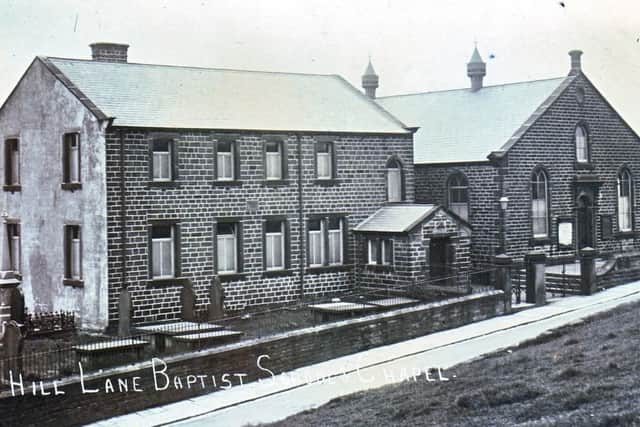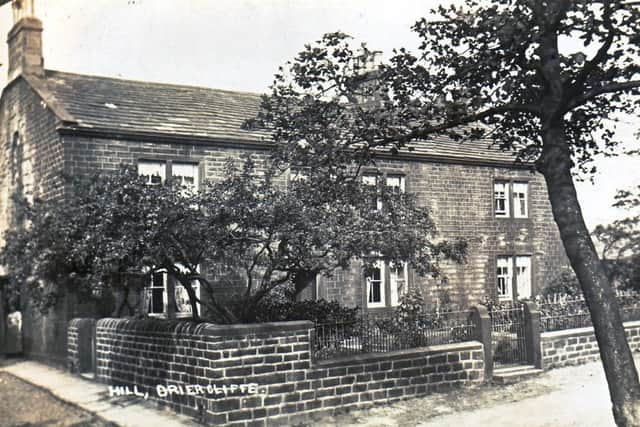Local church became a power in non-Conformity


We have, so far, only covered the first 15 years of the chapel’s history. In that time we have noted the story of the dispute which led to Hill Lane breaking from Haggate, the founding of the old Chapel at Lane Bottom and the decision by the church there to leave the Scotch Baptists and join the English Particular Baptists.
When Hill Lane joined the Particular Baptists they were joining a sect which had strong roots in the Burnley area. The Particular, or Calvinistic, Baptists, as they were also known, had been founded, locally, in Colne in 1767 with the arrival of a few members from Barnoldswick, an early centre for the movement. There are early records of open air baptisms performed in Colne Water but the first reference to a place of worship is to a “preaching house” off Windy Bank in Back Market Street, which, in those days, was known as Back Side.
Advertisement
Hide AdAdvertisement
Hide AdA small chapel was built, on property, formerly owned by the Cunliffe’s of Wycollar, on Nailer’s Croft, in Colne Lane in 1788. While occupying this building baptisms were conducted in a well in a tannery yard at Waterside. However, the chapel provided the first Sunday School in Colne in 1800. This early chapel was superseded by, Zion Chapel, on what was then East Parade, Colne, in 1826. In later years, this was to become one of the most important places of Nonconformist worship in Colne.


When a Richard Hall, a Baptist from Colne, moved to Burnley in the 1820s, he opened a day school in Croft Street. Then, in 1827, with the support of other Colne Baptists, a Sunday School was opened in what was described as Pickup Croft. This may have been at the same location as the Croft Street site, but, a year later, in 1828, this became Burnley’s first Particular Baptist place of worship.
In “Sion Baptist Church: Past, Present Future”, published to celebrate the building of the present Sion, in Church Street, Burnley, the date of “Good Friday, April 1st, 1831” is given as the date of the opening of the first purpose-built chapel which was in Yorkshire Street, Burnley. Confusingly, Mr Bennett, in his “History of Burnley Vol 3”, gives the date as 1835, but, whatever the date, this was replaced, in 1862, by the huge Sion Baptist Church many of you will remember which stood on the corner of Yorkshire Street and Chapel Street, near the former Yorkshire Hotel. The chapel of 1862 was demolished to make way for road improvements planned in the late 1950s. The present Sion was opened in 1962.
Getting back to Hill Lane, when the church there decided to leave the Scotch Baptists it was to Sion in Burnley they turned. The Rev. Richard Evans was minister there, from 1844 to 1874, and he, in 1853, agreed to preach at Hill Lane on Sunday afternoons. It was then the members decided to leave the Scotch Baptists and apply for membership of the English Particular Baptists. The first resident minister, the Rev. William F. Smith, was appointed in 1856, though Mr Evans, in his time, had been assisted by the Rev. J.C. Park, minister at Trinity in Colne.
Advertisement
Hide AdAdvertisement
Hide AdIn the eight years he was at Hill Lane, Mr Smith added 56 new members to the Church. It was also at this time that Hill Lane Baptists joined the Baptist Union and Mr Smith, who seems to have been an energetic man, established a private academy – a small school for boys – at Hill Lane. The objective of the Academy was to prepare boys for private education at what we would now call public schools but, apart from the odd bit of information, we know very little about Mr Smith’s educational activities. What we do know is Mr Smith charged £25 per term so this facility was not for the locals!


Mr Smith left Hill Lane in 1864. He seen the church grow from its small beginnings to become quite a power in local Nonconformity. It was not long before Hill Lane was in an expansionist mood. This can be seen in developments in Briercliffe and Nelson.
In the former, the numerical growth of the church meant the facilities in the original building, which combined a small chapel with what has been described as a “minister’s house”, were proving inadequate. Within a short space of time discussions were being held about enlarging the facilities of the church, especially the chapel. The provision of a Sunday School was also on the agenda but there was little agreement about what should actually be done.
Some thought the existing building should be remodelled so the chapel could be enlarged and better accommodation for the Sunday School provided. Others were of the opinion a new chapel was necessary and the existing facilities could be re-designed to provide space for the Sunday School and space for other activities.
Advertisement
Hide AdAdvertisement
Hide AdAt this time the facilities for a Sunday School were of considerable importance. Some years before, a report had been written in the “Burnley Advertiser” noting that, out of 3,000 young men and boys, 2,000 had not attended any form of Sunday worship including a Sunday School. There had been Sunday Schools in Burnley since the end of the 18th Century and, indeed, the first had been started at Roggerham, Briercliffe, in 1798, but there still remained much to do in the 1850s and 1860s.
The first reference I have come across to a Sunday School at Hill Lane is for 1847 when there were 78 names on the school register. It is clear there had been a moderately successful Sunday School, connected with the church, for some time, perhaps from 1840, when the first chapel buildings were opened. In addition, it can be added Hill Lane took its Sunday School very seriously and the church, because of its connections with Nelson, found itself at the forefront of the movement to found a Sunday School Union in that town.
Those who ran the church were also aware that worshippers often had to travel some distance to Lane Bottom, where the chapel was situated. Quite a number came, every Sunday, from Nelson where there was no English Particular Baptist Church. Similarly, members were aware that, at this time, Harle Syke was developing into a substantial mill village and it was necessary to have some sort of presence there.
As for Haggate, the 18th Century Scotch Baptist Chapel in Halifax Road was replaced, in 1866, with the magnificent Haggate Baptist Chapel which from then, until its recent demolition, dominated the village. However, the English Particular Baptists of Lane Bottom did not see themselves as rivals to their brethren in Haggate and had no plans to establish a place of worship there.
Advertisement
Hide AdAdvertisement
Hide AdIn the last article in this series, I will tell you how it was that Hill Lane Baptist Church addressed all these issues – building a new chapel, providing facilities for the Sunday School, its role in the creation of the Nelson Sunday School Union and the expansion of the churches work in Nelson and Harle Syke. Some great things were achieved but the story also includes the burning, in effigy, of one of the ministers at Hill Lane! It could only happen in Briercliffe!